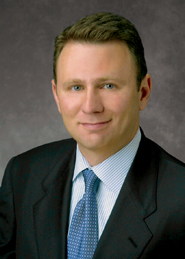By any measure, the world of exchange-traded funds has exploded. In the past two years, the number of funds trading on the nation’s exchanges has surged 27 percent to 850. The mostly index-based funds now hold around $800 billion in assets, up from $622 billion just two years ago. All of that is good news for the trading community. In the same time period, the number of ETF shares traded has skyrocketed roughly 66 percent to more than 1.3 billion per day, outpacing volume in the broader market, which is up only 23 percent.

Propelling the surge, to a large extent, is the movement of long-only money managers into ETFs. Long a province of hedge funds, traditionals have gravitated to ETFs because the instruments are index-based and cheap to trade, and allow for easy exposure, diversification and hedging.
See Sidebar and Chart:
But while trading an ETF that tracks the S&P 500, like the Spiders (SPDR), is easy because the fund trades 160 million shares per day, there are a whole slew of them that require heavy lifting and force traders to earn their keep. Almost two-thirds of ETFs trade fewer than 100,000 shares a day, and 44 percent trade fewer than 25,000 shares a day. Those aren’t the greatest liquidity characteristics to draw institutional interest.
The Agency Crowd
Here’s the deal: As money managers started dipping their toes into smaller and more targeted funds, they noticed that the liquidity they needed for their exposures often dried up fast. In addition, they saw that capital, traditionally a natural remedy for illiquidity, wasn’t nearly as abundant for less-traded instruments, industry sources said. And when it has been available, it’s been expensive.
Over the past two years, though, ETF trading has evolved to fill the void. New and established players from the agency brokerage ranks have entered the ETF space to find novel and varied ways to trade less-liquid names more cheaply.
They’ve been using their relationships across the Street to find contra side flow, or building technology to draw it forth. To that end, they’ve been dedicating sales trading resources to work specifically with market makers and arbitrageurs that trade ETFs, as well as with the dealers–called authorized participants, or APs, who are also market makers–the large banks who create and redeem shares of them. They’re finding counterparties who will tighten spreads and lower prices in thinly traded funds.
Firms that fall into this camp include new participants such as Fox River Execution and Street One Financial. They also include new desks, like ConvergEx’s, as well as established ETF block traders, like JonesTrading.
Their efforts have been a boon to hard-to-trade funds. By some industry estimates, agency firms sourcing ETF liquidity through many APs has grown to encompass about 80 percent of all volume in funds with ADV under 100,000 shares. In addition, an estimated 40 percent of all ETF flow is traded this way.
"It has become a much bigger part of the ETF space," said Brian Fagen, co-head of Americas liquid market sales at Barclays Capital.
Until the last few years, ETFs had been the dominion of mostly retail customers and hedge funds. Since the long-onlys entered the space in larger numbers, though, institutional volume has grown to comprise somewhere between 50 and 70 percent of total ETF volume, according to industry estimates.
But such popularity does not obscure the fact that some ETFs can be hard to trade. Liquidity, for instance, can be hard to find in any volume for smaller and newer ETFs, said Reginald Browne, co-head of Knight Equity Markets’ ETF team. Market makers need to have inventory in an ETF to generate activity and get traders involved in it. Maintaining that inventory can be challenging with ETFs that are too unfamiliar or are based on too esoteric an idea.
A Different Animal
An ETF is generally as liquid as its underlying components, trading pros said. An ETF with a large-cap underlying–anything that tracks the S&P 500, such as Ultra S&P 500 ProShares–will be easy and cheap to trade, whether hedging or arbitraging. Likewise, an ETF with an underlying from, say, the second-tier emerging markets or high-yield bonds probably won’t be.
To others, such as Fagen, the concept of an illiquid ETF is harder to define. "ETFs, on their own, don’t have liquidity," he said. "The liquidity is created for them, so you can always get liquidity in an ETF if you want. It’s just at a price."

As with any security, a typical solution for trading illiquid names is for a buyside client to ask his broker for capital. But committing capital in ETFs is not the same as committing capital in any old stock; ETFs are a different animal. They’re derivatives that are priced according to the net asset value of their underlying securities.
If a buyside client needs shares in a less-liquid fund–and they aren’t available in a market maker’s inventory–then an AP must "create" them at a price that’s in line with the ETF’s NAV. APs are often the market making desk of large banks. A list of 45 APs for iShares’ funds presents a good sampling. It includes the Bulge Bracket, some clearing firms and others, such as Citadel, Lek Securities, Newedge USA, State Street Global Markets and Timber Hill.
An AP either buys or borrows shares in the ETF’s underlying securities and delivers them to the fund’s issuer, such as State Street Global Advisors, BlackRock (iShares) or Vanguard–the three biggest–to create a large block of shares, or unit, of the ETF. The AP ultimately delivers the shares to the client at NAV for a fee of around $2,500, industry sources said.
And there are other issues surrounding capital. Industry pros in the ETF space readily acknowledge that brokers have less capital these days to devote to less-liquid instruments. That makes it more expensive. So, institutions today are reluctant to ask for capital unless it’s absolutely necessary, said Laurie Berke, senior consultant at TABB Group.
"With assets down, and commission wallets down, it’s hard enough to pay bills without getting beholden to someone for losing money on a trade," she said.
Agency brokerages have moved in to help. Their involvement in sourcing liquidity for less-liquid ETFs has grown over the past couple of years because more institutions have moved beyond trading the large, liquid funds with catchy monikers–such as the Spiders, Diamonds and Qs–to get exposure in smaller, sector- and country-specific names, said Paul Weisbruch, Street One’s vice president of ETF/index sales and trading.
"People want certain exposure, so they’re going into narrower-focused ETFs that don’t trade as much volume," Weisbruch said. "And they’re having problems getting executions that are in line or that make sense for them."
In a nutshell, these agency brokers are corralling the quotes of several APs, market makers and arbitrageurs, forcing them to compete with one another to produce the best price for the buyside. This actually works to make the trade cheaper than if the buyside went to his AP or dealer directly, practitioners tell Traders Magazine.
The business of involving agency participants in the process of trading ETFs will likely grow, too, as buyside firms are more easily able to move into and out of thinly traded funds and as more agency shops open ETF trading desks that source liquidity creatively for them.
Growth Business
ConvergEx is one of the most recent firms to do this. The agency broker had been trading ETFs for some time. But late last year, it pooled resources from its portfolio, options and block-trading groups to launch an 11-man desk dedicated to trading ETFs full time. The firm picked Thomas Smykowski, who runs the program business, to head ETF trading as well.

ConvergEx’s plan is to leverage its sales trading relationships with more than 1,000 clients to glean where in the ETF space institutions are investing, Smykowski said. It is also using its market knowledge and its block- and program-trading businesses to find where firms are committing capital in certain ETF underlyings, as well as where they’d be willing to create and redeem shares, and where their arbitrage is, he added.
"We’re coming into this space to provide insight on how the underlyings of ETFs trade," Smykowski said, "and where the levels of liquidity reside on the ETFs themselves, and where market makers would be providing liquidity."
For brokers new to the space, ETFs are a growth business and a new way to get paid. And technology can be harnessed to make trading less-liquid ETFs easier.
Last fall, Fox River Execution, in Geneva, Ill., introduced technology for trading blocks of illiquid ETFs without capital. Fox Spotlight calculates a limit order price to post in the displayed markets that will draw in liquidity providers to fill blocks of hard-to-trade ETFs.
At any one time, there are 50 to 60 sets of electronic eyes–or arbitrage orders–that are watching the relationship between the ETF and the underlying, said Fox River chief executive Ron Santella. And when it gets out of line, they’ll come in and correct it.
Drawing Forth Liquidity
By going out and posting a bid in the market, so it’s fully transparent, you’re effectively trading in an auction process among those 50 to 60 players," he said. "And therefore, the best price will come out of that auction process."
One beta tester and current Spotlight user described its functionality.
"It can bring the APs out of the woodwork to create units, to fill big orders with little market impact," said Terry Ransford, director of trading at Northern Trust Securities Inc. "It really works effectively."
In November, several veteran ETF traders opened an agency brokerage in King of Prussia, Pa., named Street One Financial. Street One specializes in sourcing liquidity with a large number of market makers, APs and arbitrageurs to execute thinly traded ETFs, said Scott Freeze, the firm’s president.
Street One has relationships with many liquidity providers to whom it sends several orders daily. Doing so nets Street One many two-sided quotes that compete against one another to fill a client order. Therefore, the firm figures it will have more success at getting better prices out of its network of liquidity providers than would institutional customers who go to a market maker individually, Freeze said.
UBS is a top-ranking ETF volume trader and an AP in 90 percent of U.S. ETFs. In this role, it would typically provide the capital for trading less-liquid ETFs, said Ken Marschner, UBS’s head of U.S. quantitative trading, the group responsible for ETF trading. He has noticed small brokers and agency-only shops looking to UBS for liquidity in less-liquid ETFs. It happens more, Marschner added, most likely because ETF volumes overall have continued to rise in the last couple of years.
"So, more end-investors are using ETFs; they’re being held in more portfolios," he said. "Therefore, all brokers are trading more ETFs than they were five years ago. And there are more ETFs and more participants."
Despite the new help the buyside is getting finding liquidity, some money managers say it’s not worth the trouble.
One institutional customer said he’s leery of thinly traded ETFs. His firm only trades those funds with ADVs above roughly 450,000 shares. And it only trades ETFs on occasion for quick exposure, and without using capital.
Regarding ETFs, he added, institutions are as mindful of capitalization as they are of trading volume. Accordingly, they would most often deal with the largest ETFs.
"Besides ADV, people will look at capitalization and make sure it’s not small," he said. "So I can’t imagine a big institution is trading the thin stuff. That’s just my impression. They’re mostly dealing in ones that are plain vanilla. There are a lot of non-plain-vanilla ones that can give you some heartache."
(c) 2010 Traders Magazine and SourceMedia, Inc. All Rights Reserved.
http://www.tradersmagazine.com http://www.sourcemedia.com/





